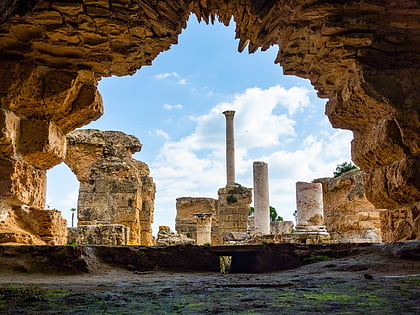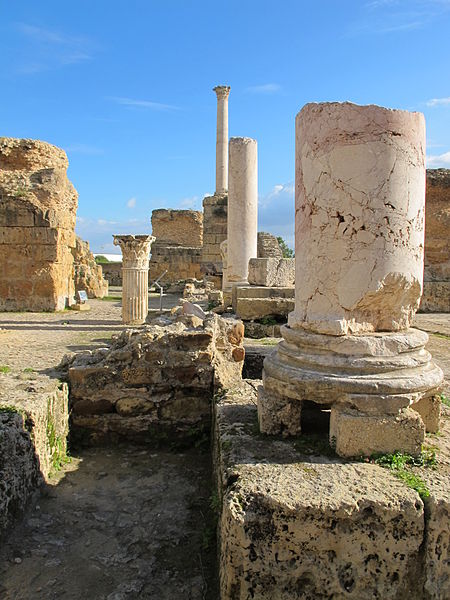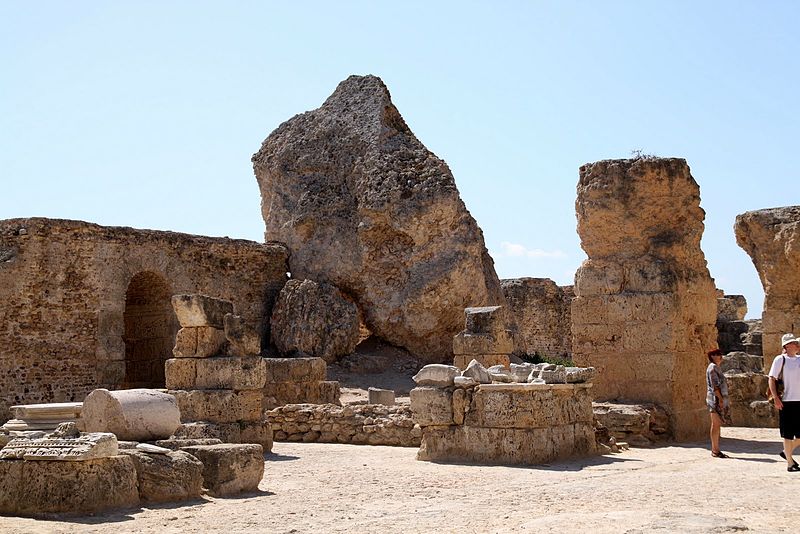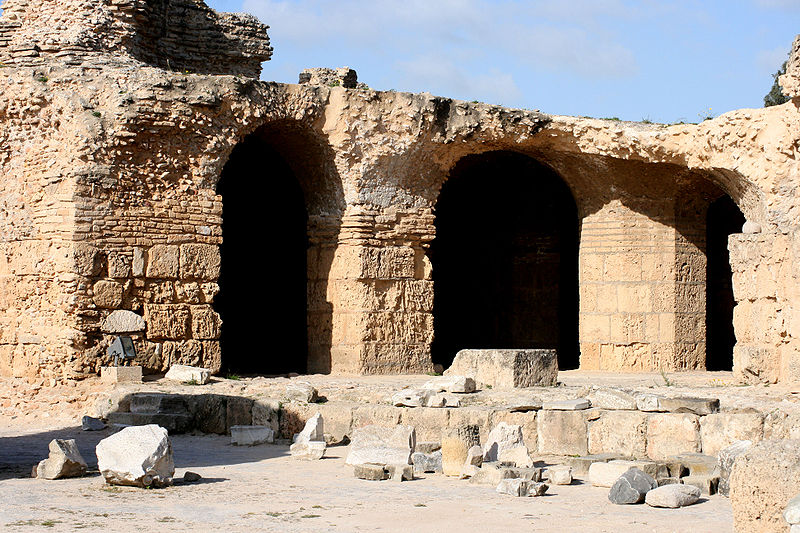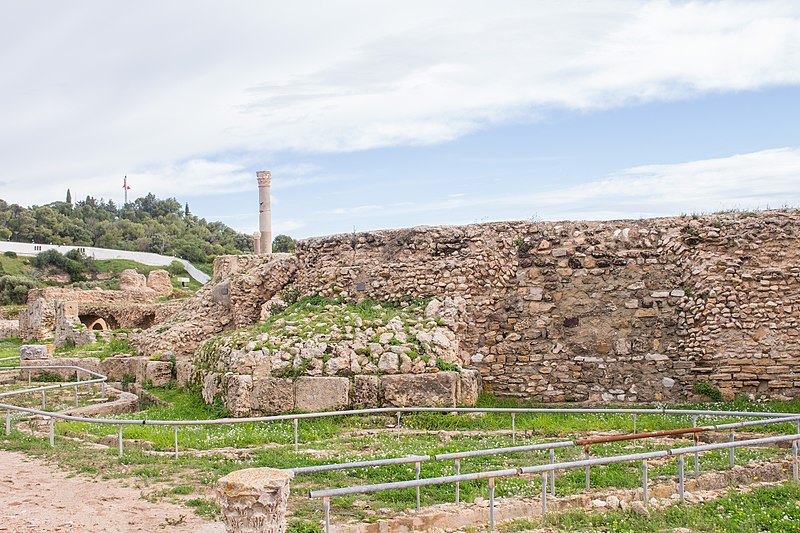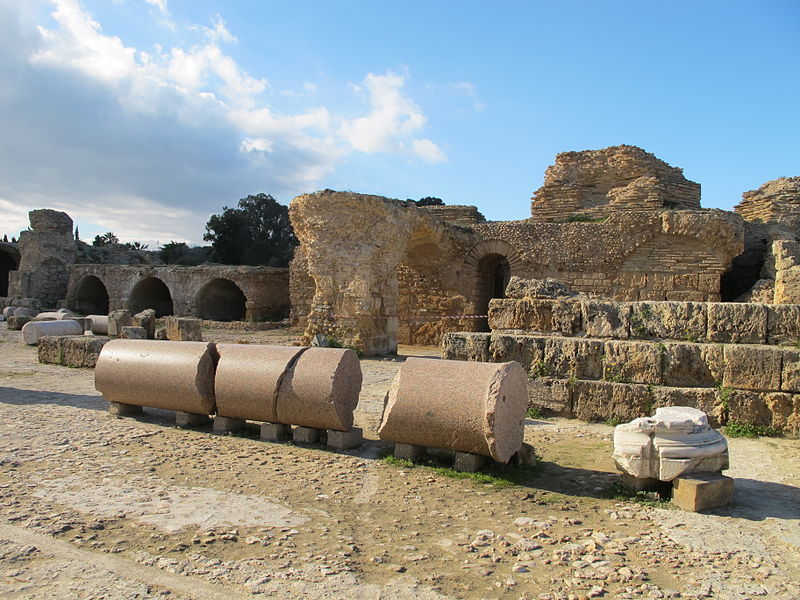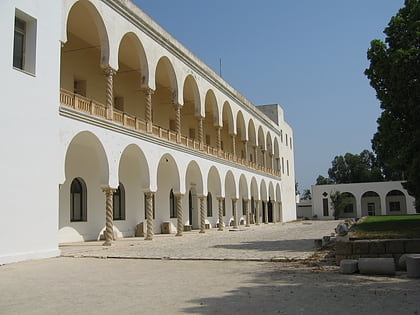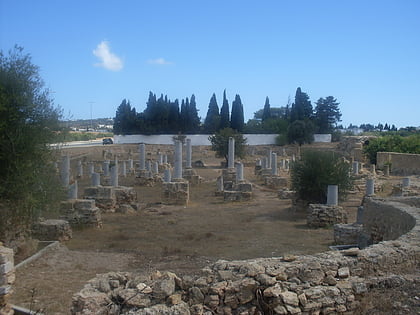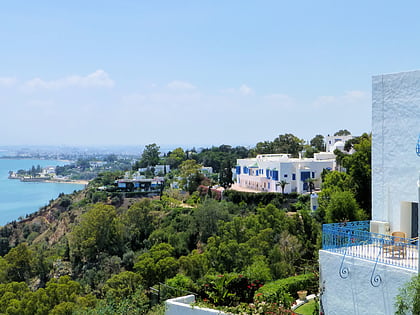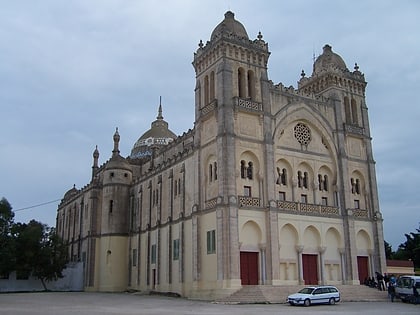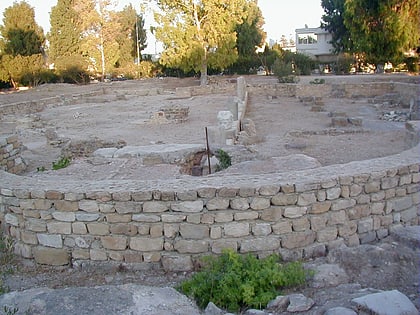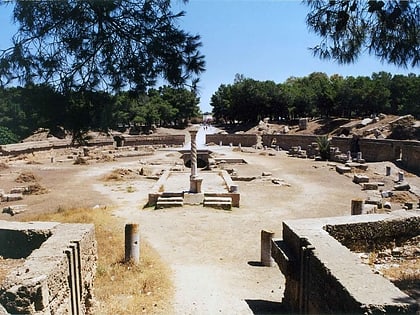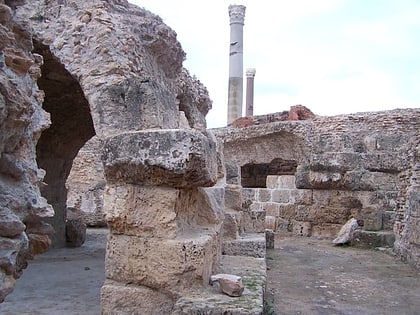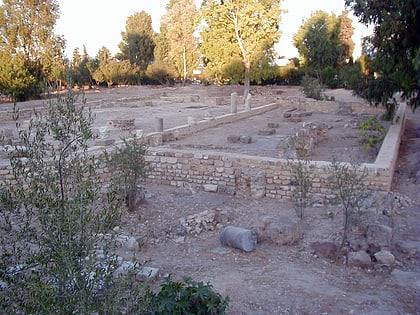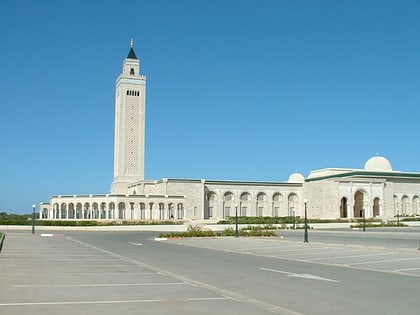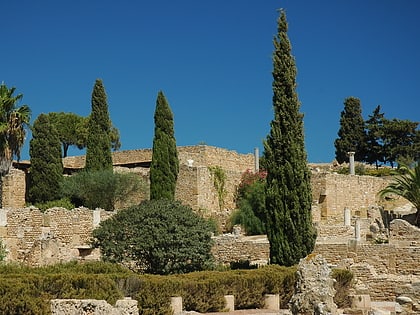Baths of Antoninus, Tunis
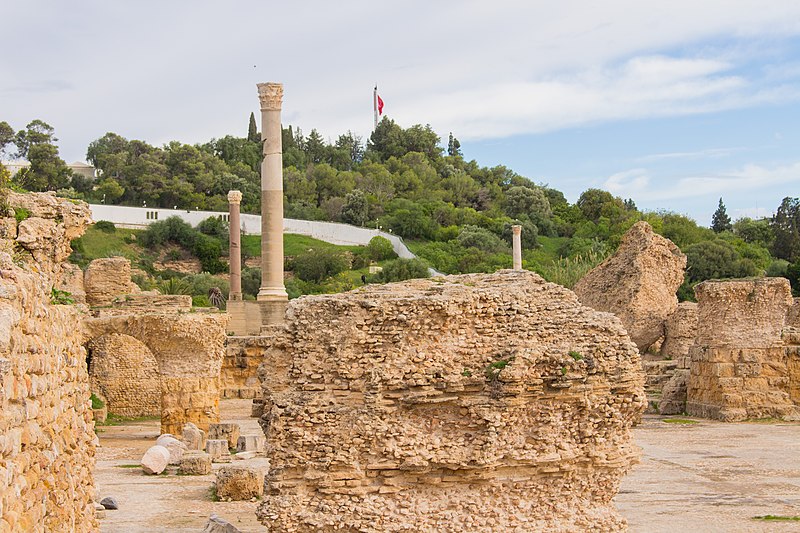
Facts and practical information
Nestled within the heart of Tunis, Tunisia, the Baths of Antoninus stand as a testament to the grandeur of Roman engineering and architecture. These ancient baths, named after the Roman Emperor Antoninus Pius, represent one of the largest and most significant Roman thermae built on the African continent. Constructed between 145 and 162 AD, the Baths of Antoninus were a hub of social activity and a symbol of the city's importance within the Roman Empire.
Spanning an impressive area, the ruins provide a glimpse into the luxurious lifestyle that once flourished in ancient Carthage. Visitors to the site can explore the remnants of the caldarium (hot bath), tepidarium (warm bath), and frigidarium (cold bath), which were the central features of the bathing complex. Intricate mosaics and columns hint at the opulence that characterized these communal spaces, where Romans would gather not only to bathe but also to socialize, exercise, and conduct business.
The Baths of Antoninus were more than just a place for cleansing; they were a center for relaxation and leisure, equipped with libraries, lecture halls, and gardens. The sheer scale of the complex underscores the importance of bathhouses in Roman culture, serving as multifaceted venues for a wide array of social functions.
Despite the passage of time, the ruins remain a captivating sight, inviting both scholars and tourists to ponder the lives of those who frequented this ancient establishment. The Baths of Antoninus are an essential stop for any visitor to Tunis, offering a tangible connection to the city's storied past.
As a cultural heritage site, the baths are open to the public, allowing for an immersive experience into the world of ancient Rome. The grandiosity of the surviving structures, although partially reclaimed by nature, continues to enchant visitors, providing a unique window into a bygone era of opulence and sophistication.
Baths of Antoninus – popular in the area (distance from the attraction)
Nearby attractions include: Carthage National Museum, Basilica of Damous El Karita, Ennejma Ezzahra, Acropolium of Carthage.
Frequently Asked Questions (FAQ)
Which popular attractions are close to Baths of Antoninus?
How to get to Baths of Antoninus by public transport?
Light rail
- Carthage Hannibal • Lines: تونس - حلق الوادي - المرسى, خط تونس-حلق الوادي-المرسى (9 min walk)
Train
- Carthage Présidence (13 min walk)
- Carthage Dermech (16 min walk)
